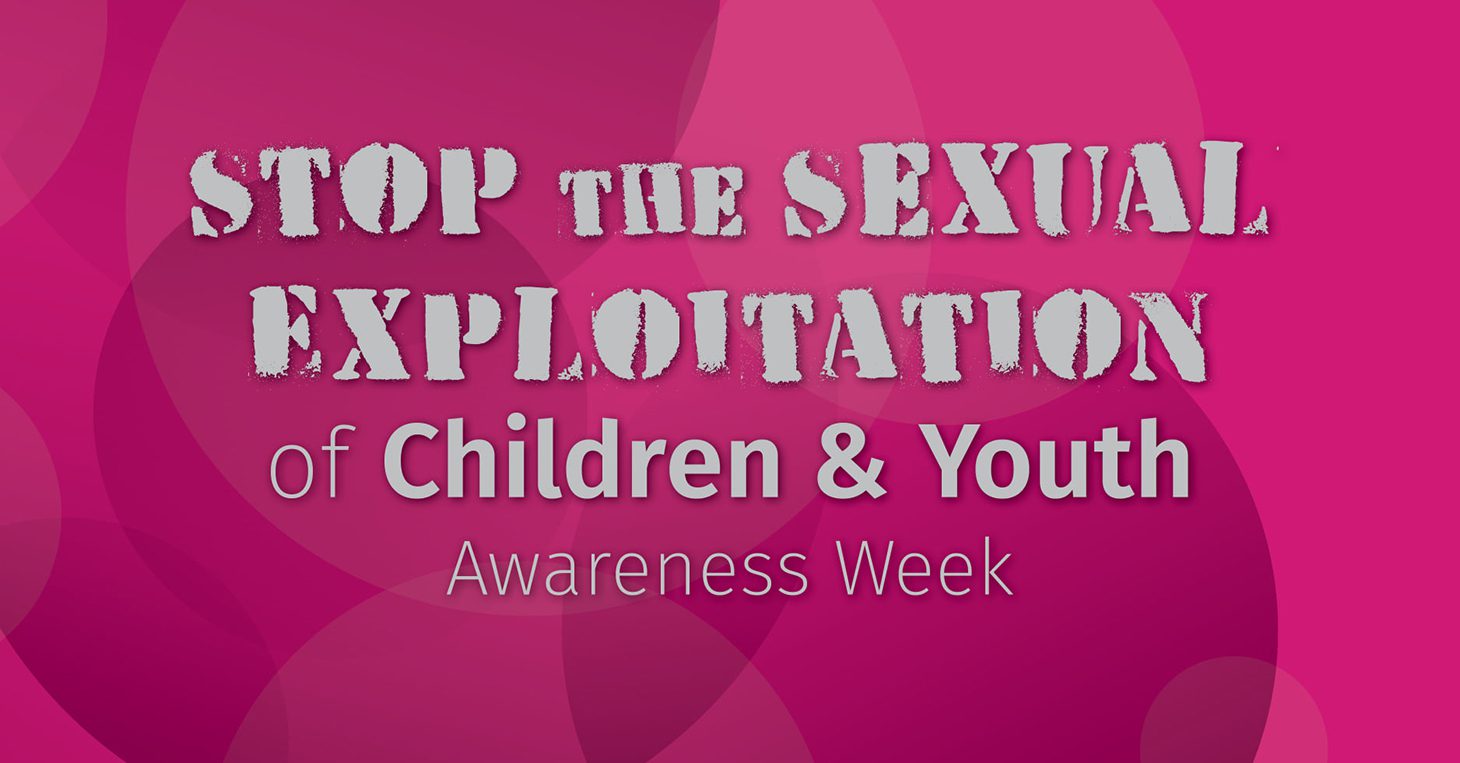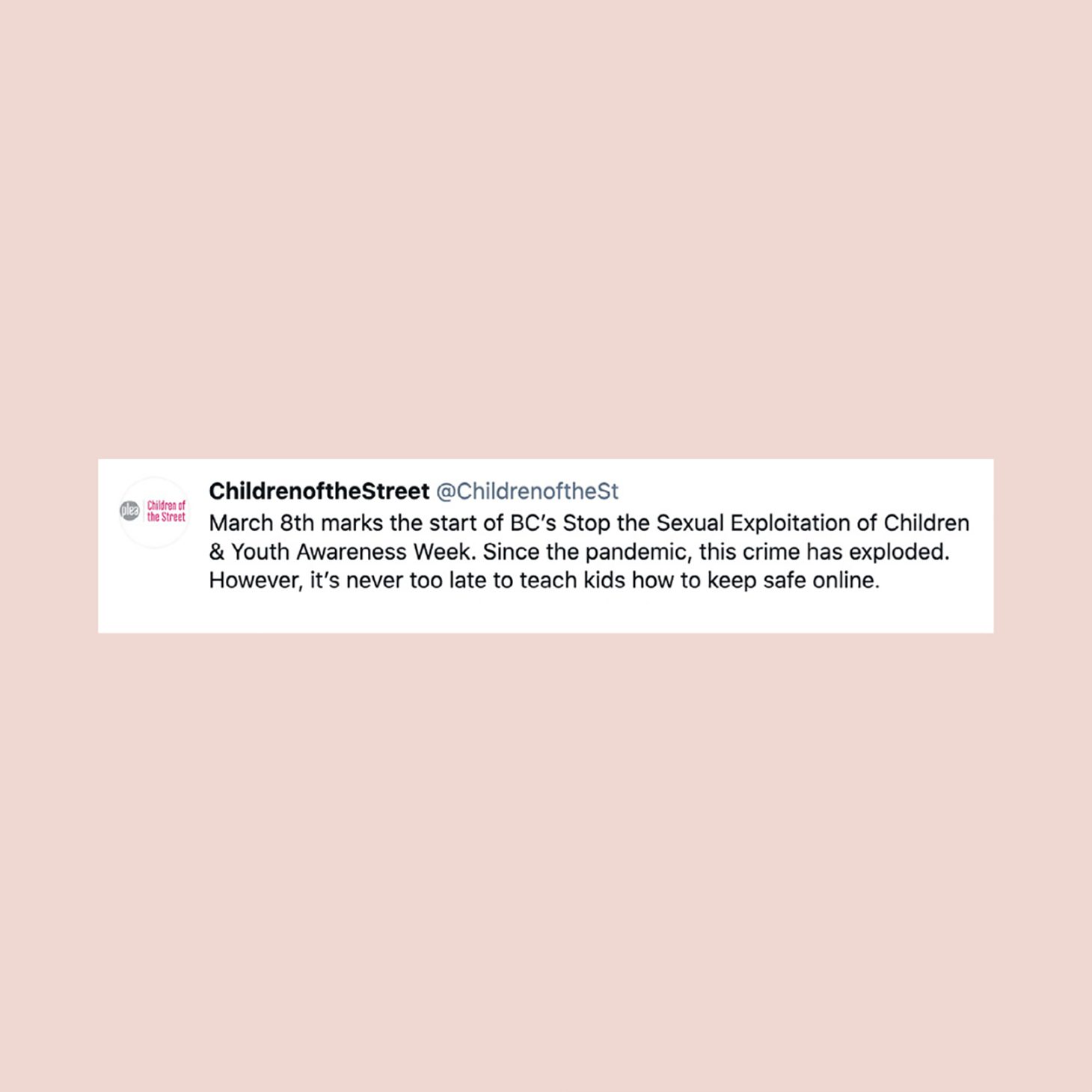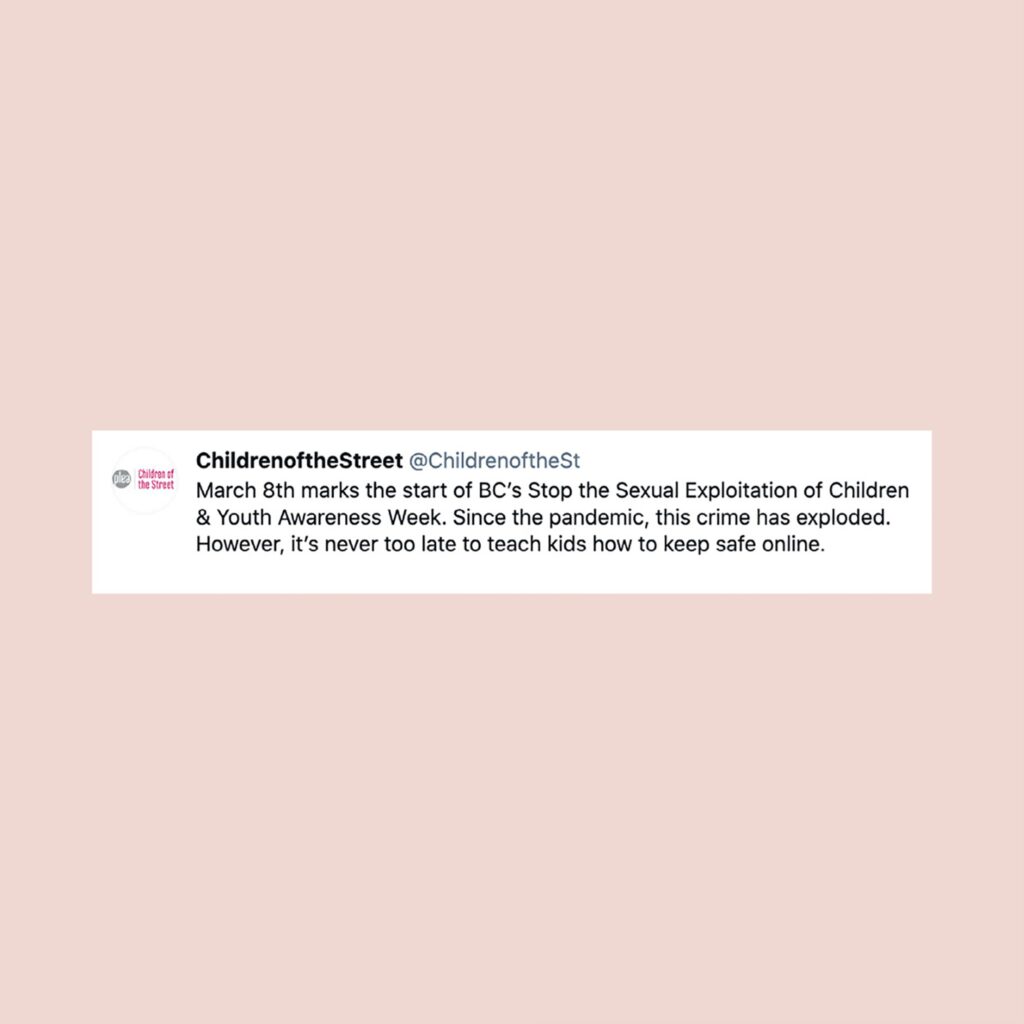Happy Friday, everyone! From the title of the post, you can probably tell that this isn’t the typical content you find here, especially on Fridays. BUT, sexual exploitation is something that is happening around the world, and it can happen to anyone. There has been so much noise online lately as it relates to human trafficking and we didn’t know where to turn to find the most accurate and reliable information, then we connected with a few different organizations that specialize in this field of work.
Back in January, we blocked off a full-day to learn more about human trafficking. We ended the day with the lovely folks from Children of the Street, and they led us through their Safer Space workshop. Safer Space is a series of interactive workshops designed specifically for youth to better understand how to stay safe when using apps and social media. One of the things that stuck with me was all of the different ways that predators are exploiting children online. While it was a topic that made me sad and uncomfortable learning about as a parent, I knew that this information needed to be shared on our platform. If you are interested in taking their workshop, they are free and you can find out more information about them here. Today, Camila Jimenez, from Children of the Street will be taking over the blog to share more information on sexual exploitation.
Take it away, Camila!
“This week, here in BC, it’s Stop the Sexual Exploitation of Children and Youth Awareness Week. Many people think sexual exploitation is something that happens elsewhere. But I’ve learned it can happen to anyone, anywhere…including right here in Canada…in BC…to kids in our local neighbourhoods. It impacts all communities, sexual orientations, races, gender identities and age ranges, kids as young as 10 or 11 years old. So what do we need to know to keep our kids safe?

“Firstly, let’s define what it is. Sexual exploitation is when a young person under the age of 18 trades sex or sexual favours for something in return. Most people think this trade occurs for money, drugs or alcohol, or for necessities such as shelter or food. While this is often true, exploiters look for vulnerabilities they can take advantage of or gaps they can fill, and this includes forcing or manipulating young people to trade sex or sexual favours for things like love, acceptance, attention, or to keep a relationship on which they have come to rely.
This does not happen overnight. Exploiters take their time to find out what needs are not being met, to build a relationship, to establish trust, and to groom their victim, eventually using their vulnerabilities to exploit them. And exploiters rarely look the way that we think they do. That’s why I prefer the term ‘exploiter’ over ‘predator’ because ‘predator’ conjures up a certain image for some people, and its important to recognize that there is no particular type of person that you should be looking out for…an exploiter can be anyone. What you should be looking out for are the warning signs sexual exploitation is taking place.
The most common warning signs are gifting, age difference, lifestyle changes, and isolation. For instance, a young person may become more secretive about their daily routines or new relationships, they may start disappearing for extended periods of time or wearing expensive clothing or jewelry they could not normally afford, or there may be a significant age difference between them and their older boyfriend, girlfriend or partner. A combination of these warning signs is a good indication that it’s time to check-in on their safety.

Empowering youth to identify what a healthy versus unhealthy relationship looks like is another way to keep young people safe. Remind them that healthy relationships are built on respect, honesty, trust, true consent, and should make you feel safe. And that, by contrast, unhealthy relationships are built on an imbalance of power and control, where one person is trying to control the decisions, actions, or emotions of the other.
Finally, create a safety plan together. A safety plan is a simple way to highlight the warning signs to lookout for, what unsafe situations and unhealthy relationships look like, and who they can turn to for help when they need to talk or find themselves in danger. Identifying other resources that can support them in times of need is also a useful exercise.
Keep in mind, there are many barriers that can prevent a young person from coming forward when they suspect that they themselves are the victim of sexual exploitation. Fear, guilt, shame, and judgement are just a few. They may feel too embarrassed, or they may feel that no one will believe them. What is important to recognize is that, in instances of exploitation, it is never the young person’s fault. So, if a young person does reach out to you, show empathy, listen and be non-judgmental about what they tell you. This will encourage them to disclose more, to respond better when receiving help, and to trust you going forward.”
If you ever need help please reach out to Children of the Street. They are here for you. You can find more about them on their website, www.childrenofthestreet.ca.




